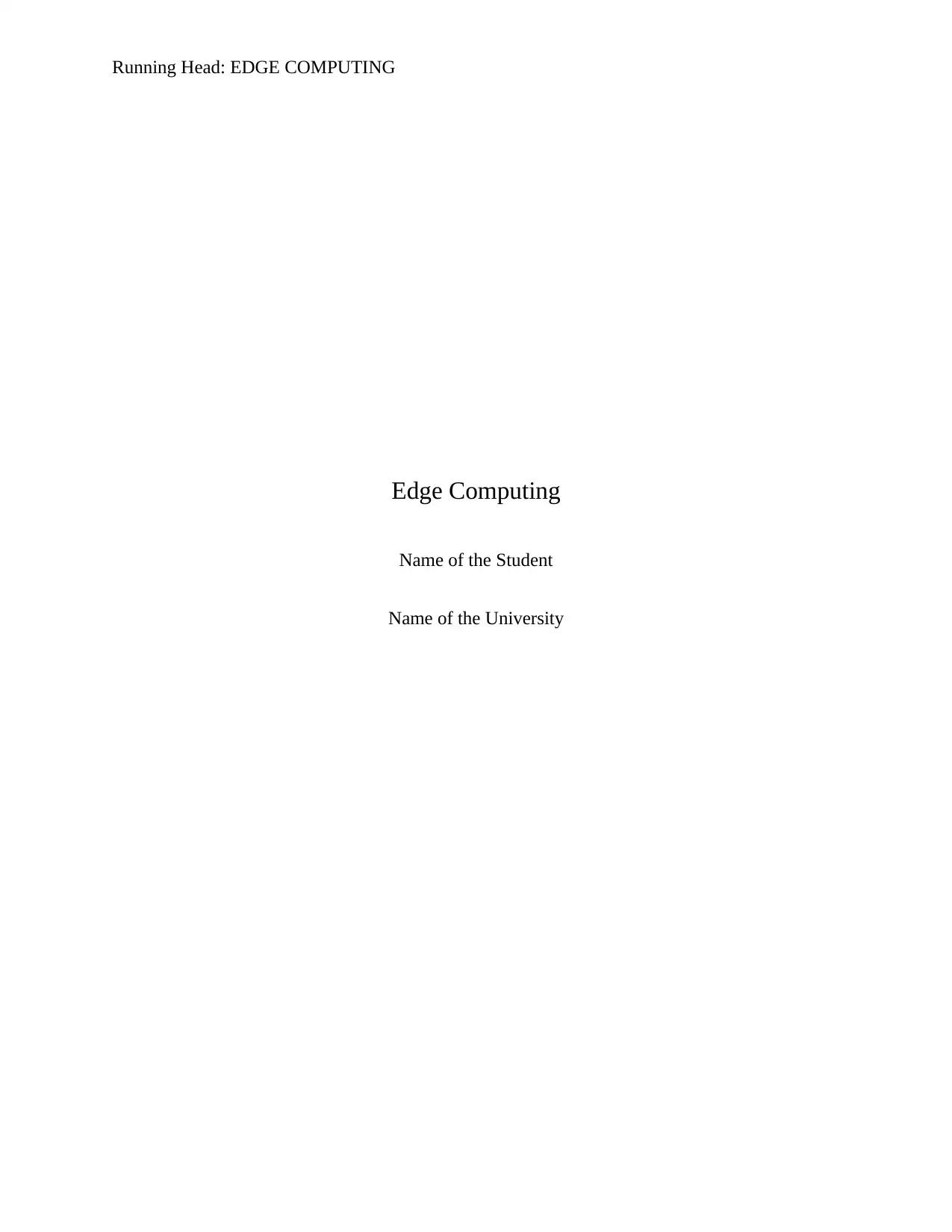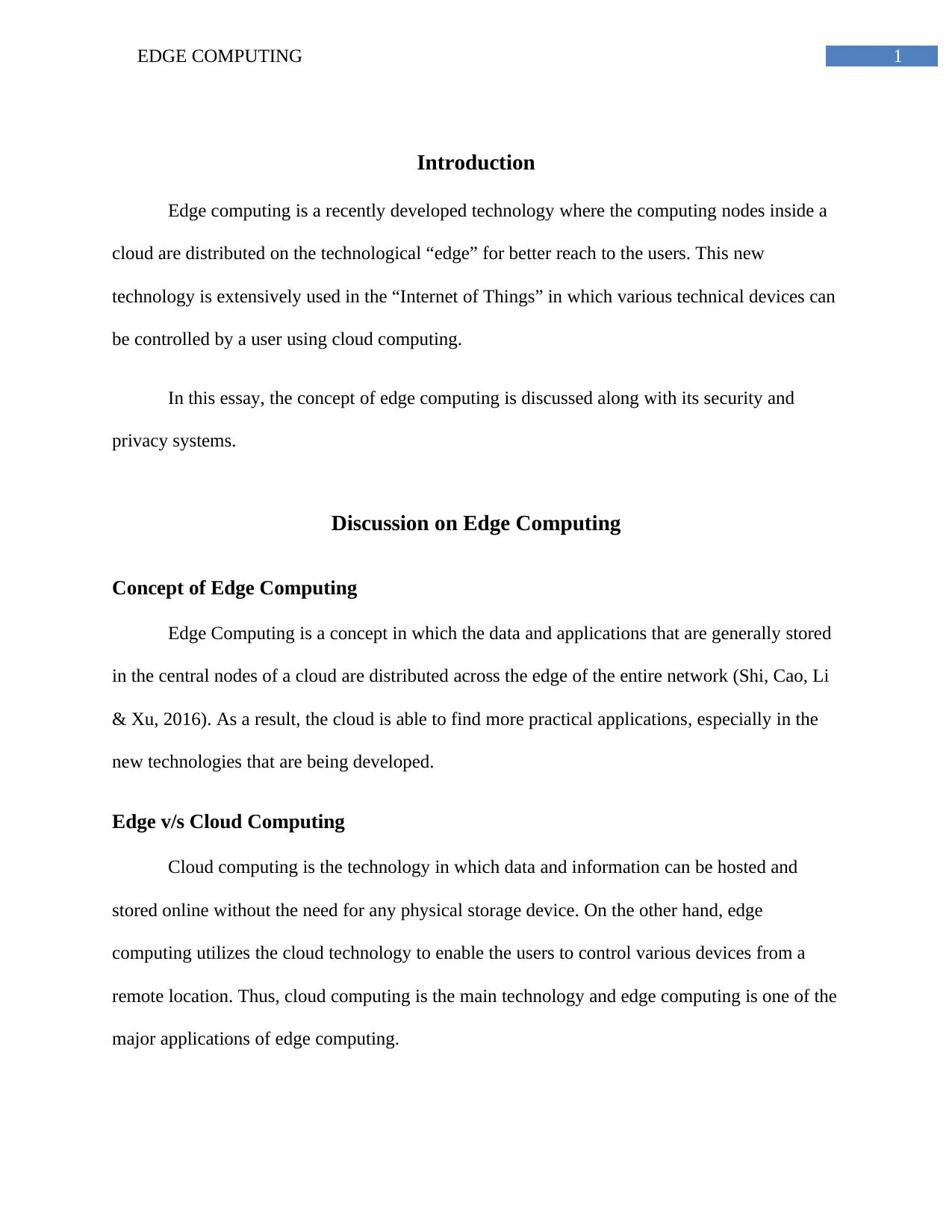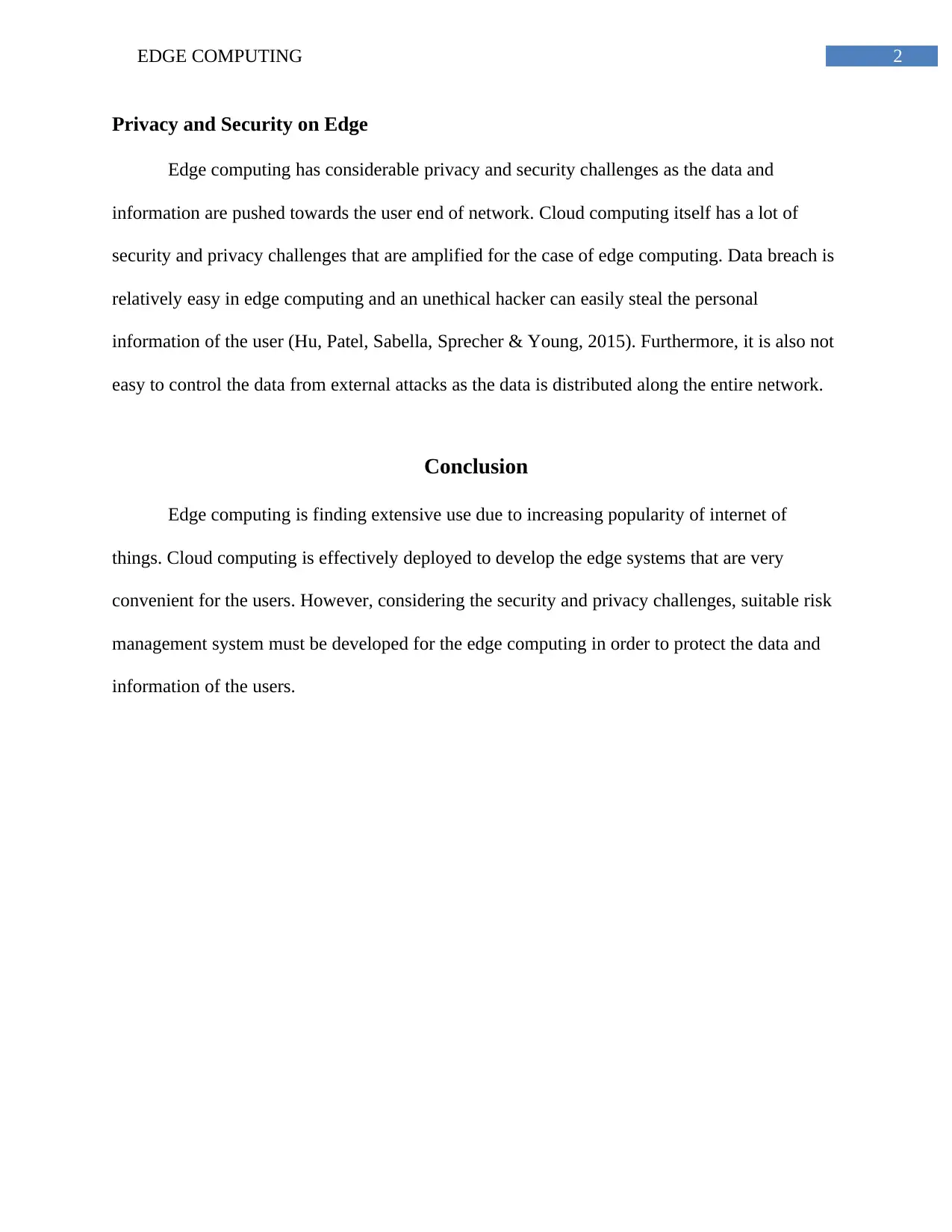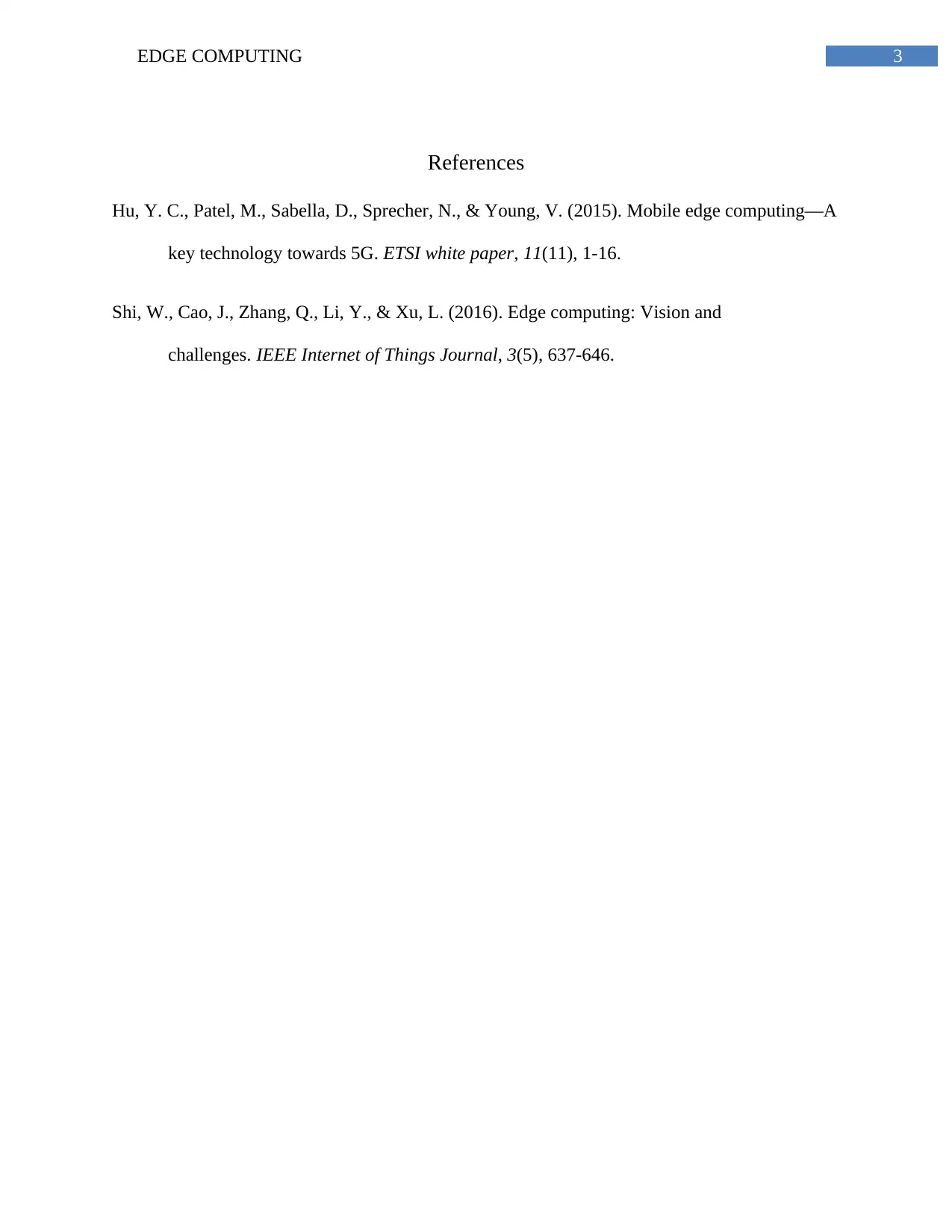ITS 532 - Edge Computing: Concepts, Advantages, and Security Risks
VerifiedAdded on 2023/04/21
|4
|512
|250
Essay
AI Summary
This essay provides an overview of edge computing, a technology where computing nodes are distributed at the network's edge to enhance user reach, particularly in Internet of Things (IoT) applications. It contrasts edge computing with cloud computing, highlighting that edge computing utilizes cloud technology to enable remote device control. The essay addresses the privacy and security challenges associated with edge computing, such as data breaches, and emphasizes the need for robust risk management systems to protect user data. It concludes that while edge computing offers convenience, careful consideration of security and privacy is essential for its successful deployment.
1 out of 4











![[object Object]](/_next/static/media/star-bottom.7253800d.svg)